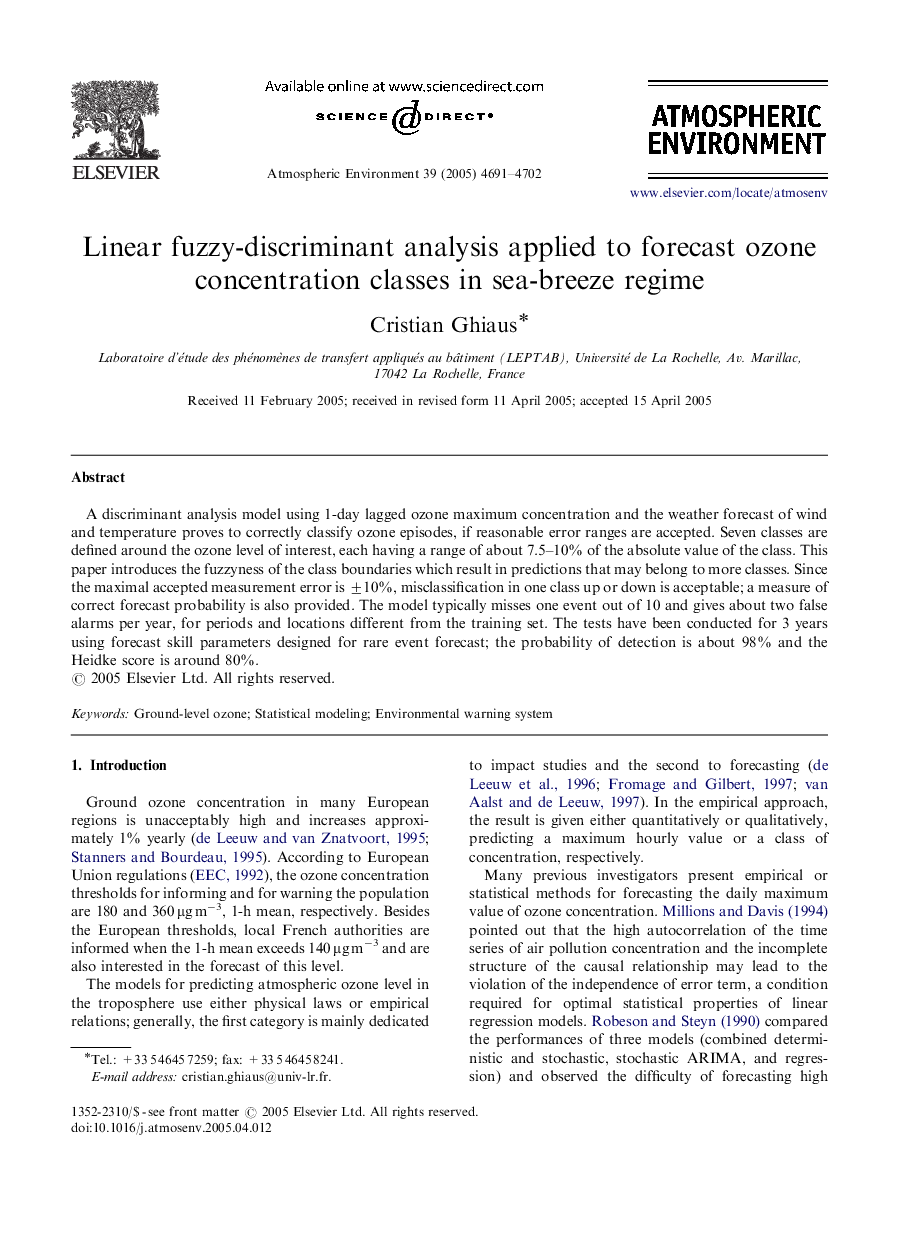| Article ID | Journal | Published Year | Pages | File Type |
|---|---|---|---|---|
| 4445425 | Atmospheric Environment | 2005 | 12 Pages |
Abstract
A discriminant analysis model using 1-day lagged ozone maximum concentration and the weather forecast of wind and temperature proves to correctly classify ozone episodes, if reasonable error ranges are accepted. Seven classes are defined around the ozone level of interest, each having a range of about 7.5-10% of the absolute value of the class. This paper introduces the fuzzyness of the class boundaries which result in predictions that may belong to more classes. Since the maximal accepted measurement error is ±10%, misclassification in one class up or down is acceptable; a measure of correct forecast probability is also provided. The model typically misses one event out of 10 and gives about two false alarms per year, for periods and locations different from the training set. The tests have been conducted for 3 years using forecast skill parameters designed for rare event forecast; the probability of detection is about 98% and the Heidke score is around 80%.
Related Topics
Physical Sciences and Engineering
Earth and Planetary Sciences
Atmospheric Science
Authors
Cristian Ghiaus,
